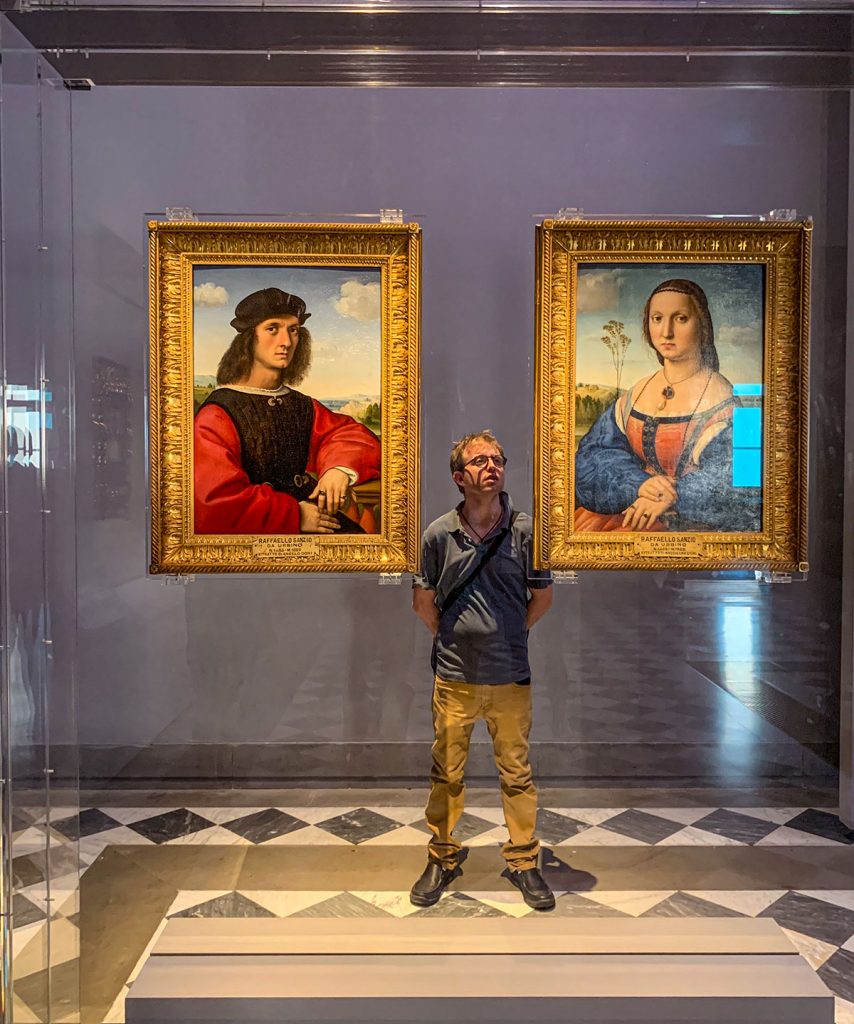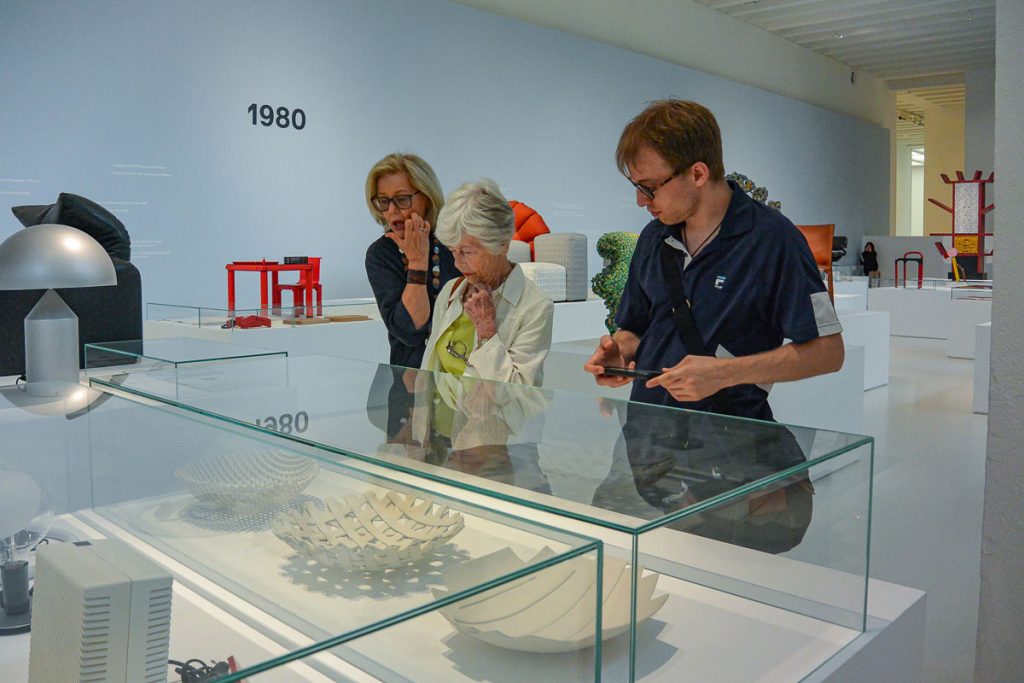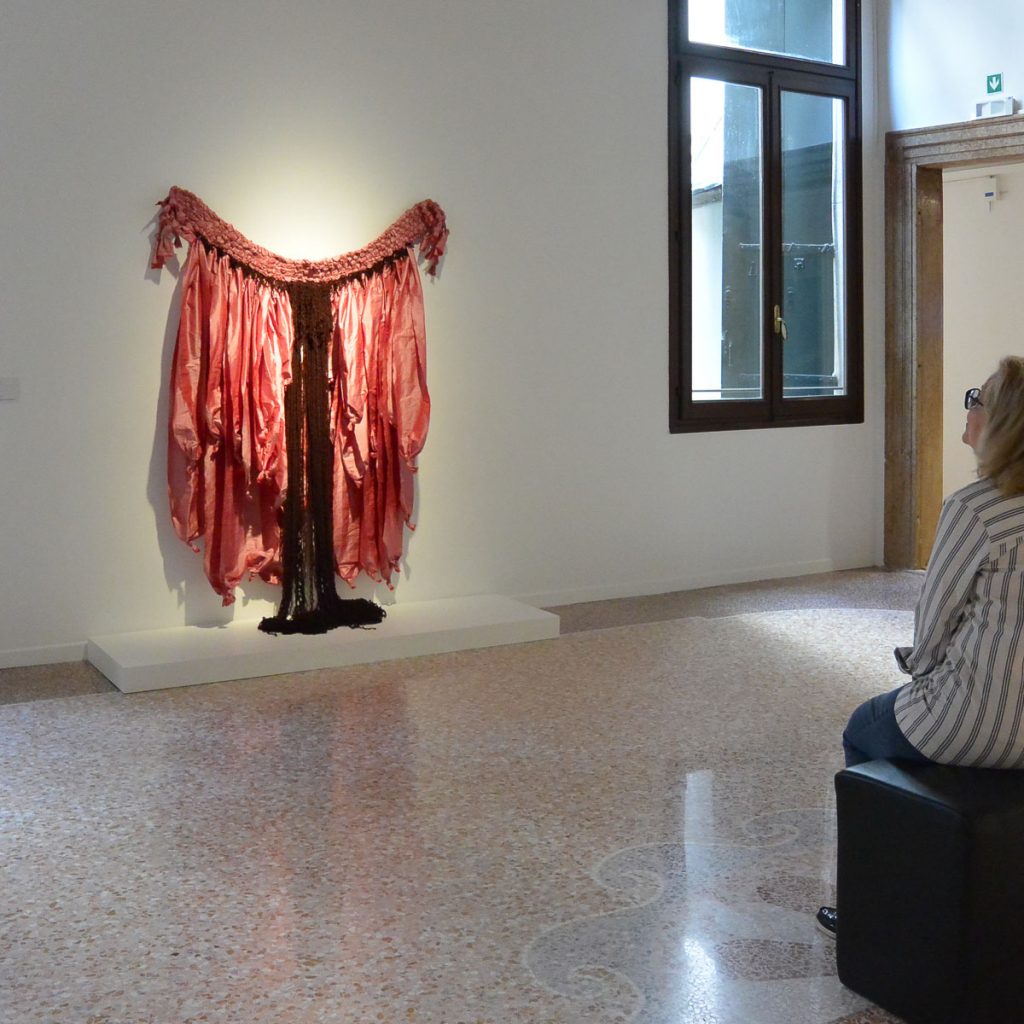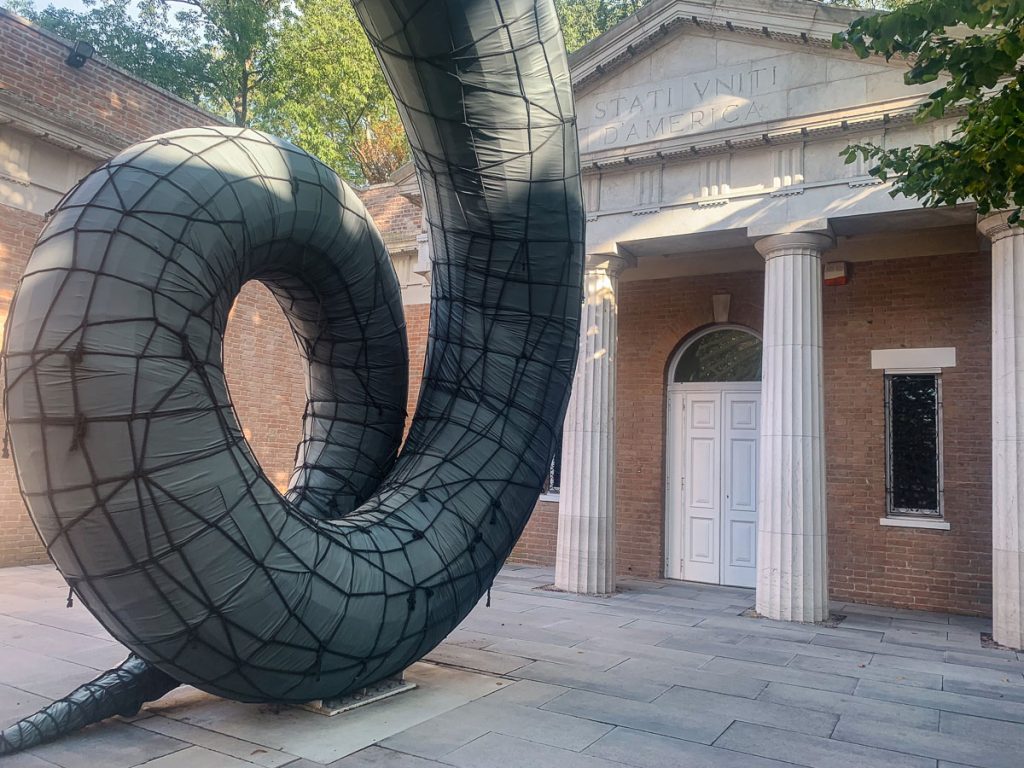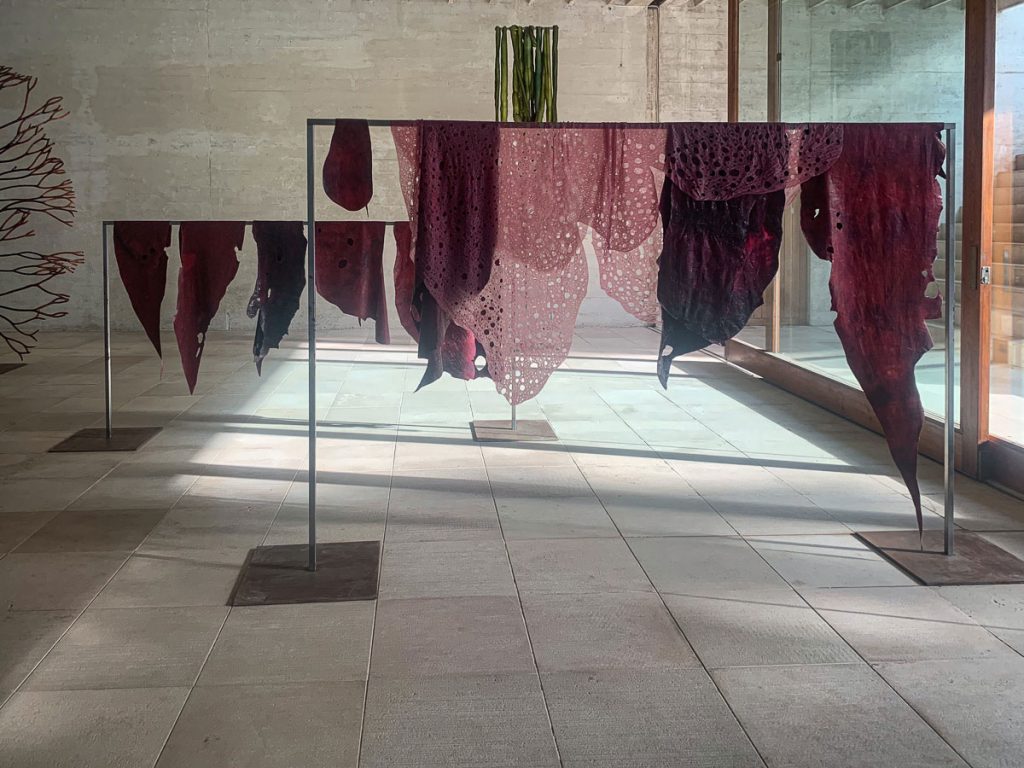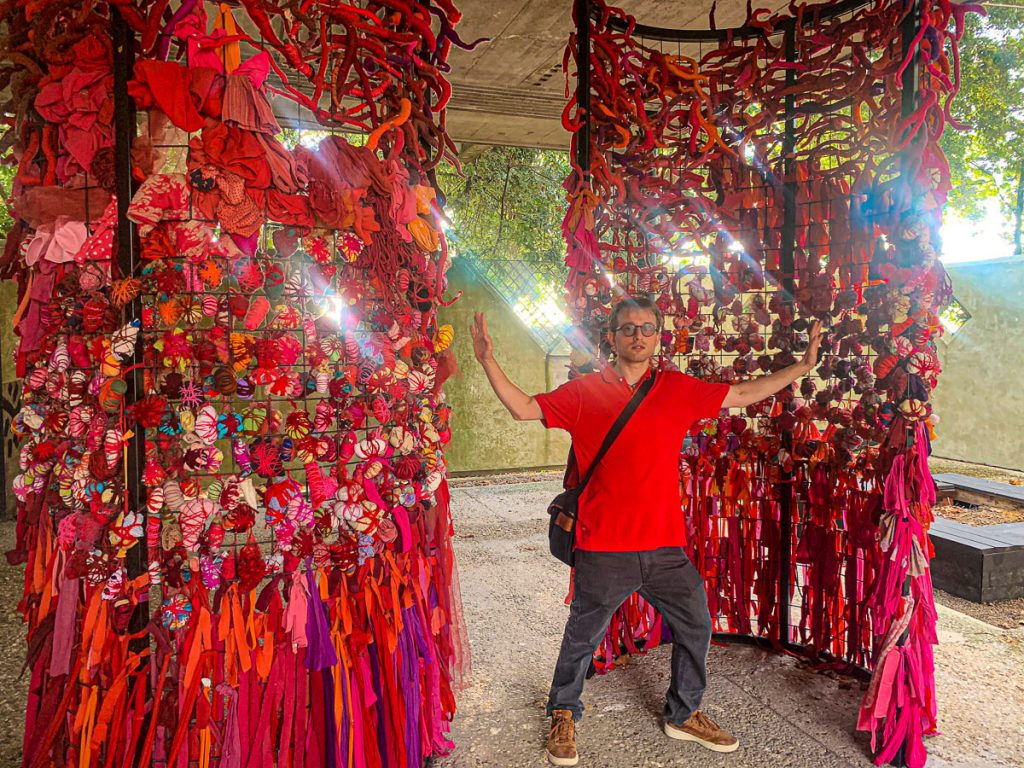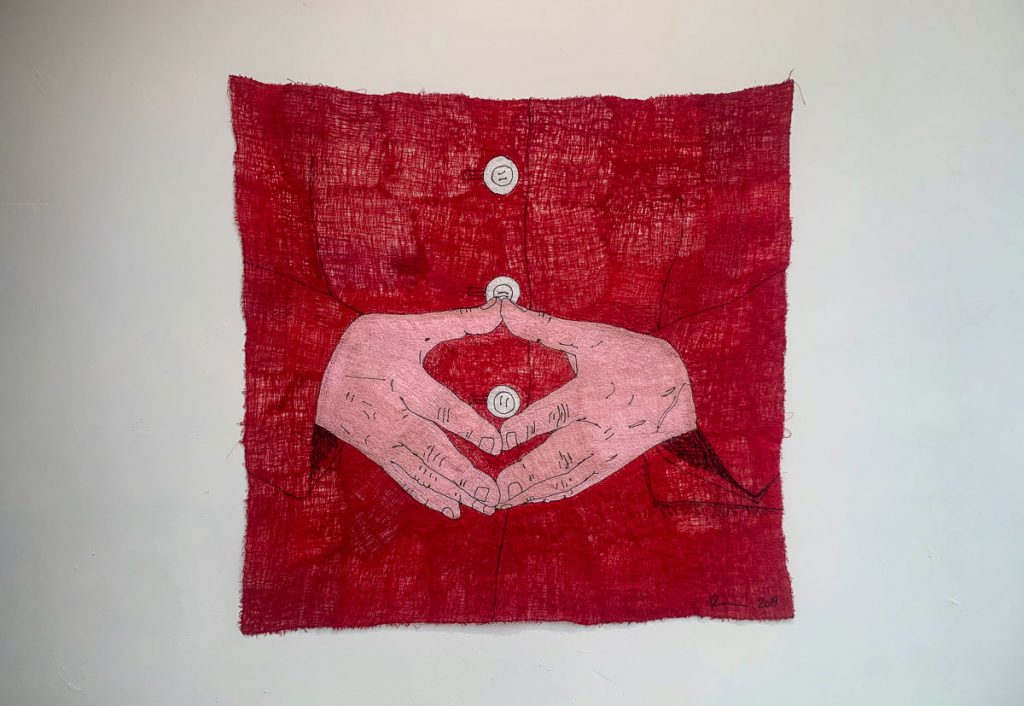
During our recent trip to Washington, DC we visited Woven Histories: Textiles and Modern Abstraction, through July 28, 2024 at the National Gallery. We are not going to pout about the fact that it has taken a few decades for contemporary fiber art to make it into the hallowed halls of the National Gallery. We are just going to revel in this expansive textile coming out party — an exhibition that challenges, however belatedly, the hierarchies that often separate textiles from fine arts.

The 150 objects in Woven Histories highlight a diverse range of transnational and intergenerational artists who have shaped the field including: Ruth Asawa, Anni Albers, Lenore Tawney, Kay Sekimachi, Sheila Hicks, Rosemarie Trockel, and Diedrick Brackens. There are also painters and sculptors like Agnes Martin and Eva Hesse whose work also played a role in modern abstraction.
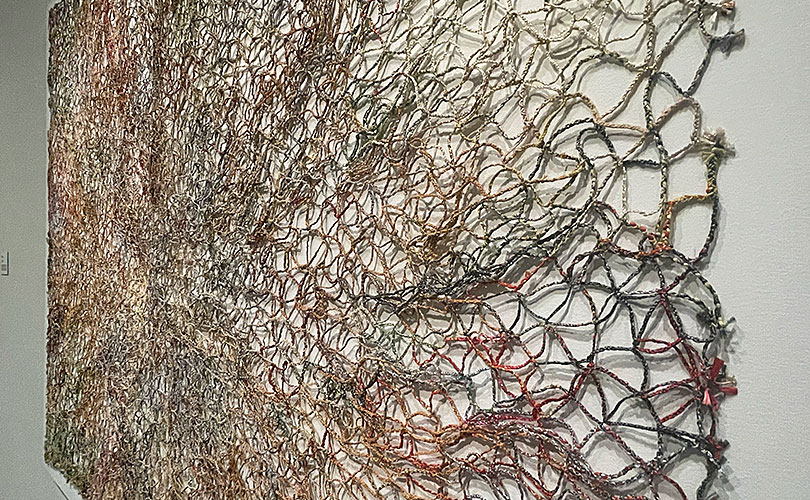
Curated by Lynne Cooke, the exhibition offers “a fresh and authoritative look at textiles — particularly weaving — as a major force in the evolution of abstraction.” Basketry is given prominence. Cook notes in the book that accompanies the exhibition, Woven Histories: Textiles and Modern Abstraction, that basketry was a moribund artform in the mid-60s, when Ed Rossbach began his “[s]triving for expressive content, signification and meaning” within basketry’s time-tested techniques. The exhibition highlights others creating basket referents, including John McQueen, Dorothy, Gill Barnes, Martin Puryear, and Yvonne Koolmatrie.
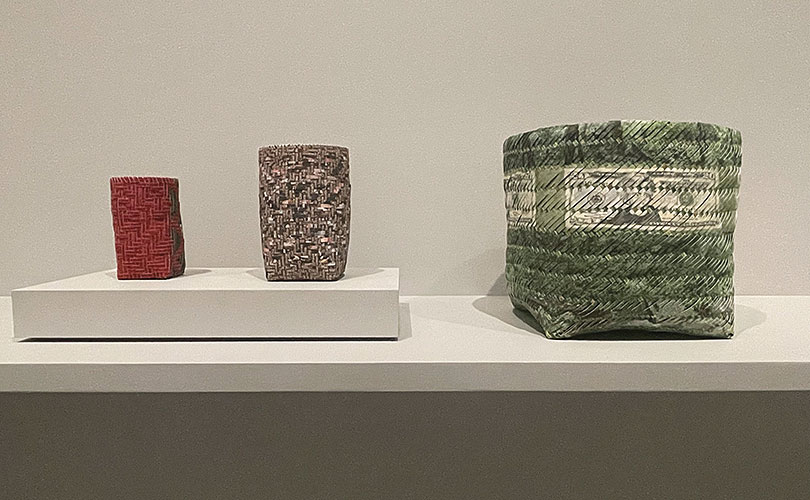
There are more than 50 artists whose work is included. The timeline is expansive — beginning with work created during World War I by Sophie Taeuber-Arp of the Zurich Dada circle, and continuing through to 21st century efforts to create community and celebrate the politics of identity by such artists as Ann Hamilton, Liz Collins, and Jeffrey Gibson. The exhibition will travel next to the National Gallery of Canada, Ottawa, from November 8, 2024–March 2, 2025 and then the Museum of Modern Art, New York, April 20–September 13, 2025.


